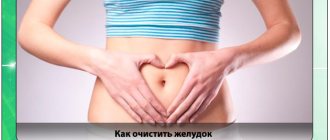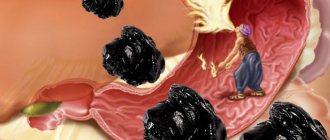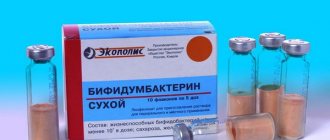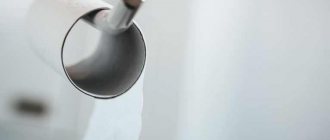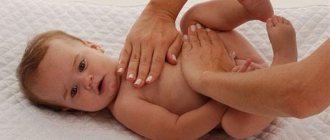Possibility of using heating pads for newborns
Already after 2 weeks of a newborn’s life, parents are faced with the problem of colic. The baby cries often and for a long time, twitches and knocks his legs, and cannot fall asleep for a long time. This happens due to the fact that a newborn baby, breastfed or bottle-fed, swallows air with food.
The baby eats too quickly, sucks too hard, or does so in the wrong position. After each feeding, it is recommended to hold the baby upright for 10-15 minutes so that he can burp the excess. In this case, the air may not come out completely and remain in the child’s stomach.
The muscle musculature of a newborn is not yet formed (usually this occurs by 6 months). Air, accumulating and combining in the stomach and intestines into large formations, begins to put pressure on the internal organs, causing pain and spasms. The child begins to cry a lot, arch over, twist his legs and get nervous.
To relieve symptoms, newborns are recommended to have a light massage, lying on the stomach and medications (Espumizan baby, Bobotik, Bebicalm), which sometimes do not give a quick effect. While a heating pad has an instant effect.
A heating pad for a newborn is an effective way to combat colic
It is considered the safest and most proven method in the fight against colic in newborns. It can be used in many cases without restrictions in quantity.
How can you tell if your baby has colic?
Increased gas formation in a child is accompanied by discomfort and pain. It is easy to recognize this condition by its characteristic symptoms:
- The baby is crying, pulling his knees to his chest.
- Often, deterioration of the condition is observed precisely after eating.
- The baby refuses to feed.
- There are problems with stool, diarrhea changes to constipation, and vice versa.
You might be interested in: Newborn baby grunts, arches and turns red
You can fight gases in a variety of ways. These include dill water, massage, putting it on the tummy and others.
According to experts and parents, a special anti-colic heating pad for children is considered the most effective and safe.
Keep baby warm and ready for bed
In cold weather, the temperature in your baby's room may be too low. A newly born baby is not yet able to independently regulate its body temperature and adapts to the environment.
A mother does not always have the opportunity to carry her baby tightly, even with a sling. Therefore, for newborn babies in the cold season, it is recommended to use Greka to warm the baby and prepare him for bed. It can be placed in the crib in advance to warm up the sleeping area, or placed next to the baby.
A warm heating pad will help your baby warm up faster and feel comfortable.
Gentle warmth will make your newborn's sleep deep and restful. The heating pad can be used in the cold season in the car and in the stroller to create comfortable conditions outside the home.
What is the heating pad for?
Heating pads are designed to warm certain areas of the body; they are used to improve sleep, reduce pain due to colic, and also for certain diseases. Infants have not yet fully developed the heat exchange function, so they easily overheat and freeze quickly. In some cases, when it is cold in the room where the baby is or when transporting a child in the cold season, a heating pad can be used to warm the baby. It is placed in the baby's crib or stroller, which, when warmed up, feels better, falls asleep faster and sleeps longer.
Another reason to use a heating pad is intestinal colic, which affects most newborn babies. There are many ways to get rid of colic, from special medications to heating pads on the tummy. Applying heat to a baby's belly has been an age-old method of reducing colic pain. It can be used in conjunction with other methods to combat this problem.
Heating pads are also used for other diseases. They reduce pain and discomfort, relax the child, calm him down and help him fall asleep faster. However, they should be used only after consulting a doctor and, preferably, under his supervision, since in some pathologies a heating pad can aggravate the situation.
For illnesses
In some cases, you can use a heating pad for illnesses. So, for colds that are not accompanied by high fever or painful sensations from teething, a warm heating pad is indicated.
It helps relieve pain and reduce cold symptoms, reduce irritability and warm up certain areas of the body. Each baby needs an individual approach, so before using a heating pad when sick, it is better to first consult with a pediatrician.
Contraindications for use
But even a little heat can have a negative effect on the baby’s body, so you can’t always use a heating pad.
There are contraindications in which the use of a heating pad can aggravate the situation:
- You cannot use a heating pad during the acute stages of acute respiratory viral infections, acute respiratory infections or group. Fever and severe symptoms may intensify during the acute period of the disease, leading to seizures and other complications.
- In case of purulent-inflammatory processes in the intestines, a heating pad is also contraindicated. When heat is applied, the development of inflammation in the child’s body accelerates. So, in case of appendicitis, using a heating pad can cause rupture of the appendix and peritonitis.
- Tumors should also not be heated to avoid negative consequences.
- It is not recommended to apply a heating pad to damaged areas of the skin, unhealed wounds, pustules and abscesses, because heat creates a favorable environment for the development of pathogenic bacteria.
- Dermatitis and allergic manifestations may intensify after exposure to a heating pad. In case of skin rashes, you should first relieve allergy symptoms and then warm up the baby.
In many other cases, when used correctly, a heating pad can become the main method of action, especially for relieving the symptoms of colic in newborns.
Video about the correct use of heating pads for newborns:
Contraindications
Despite the fact that the product in question helps well against colic and is considered safe, it is important to consider contraindications. It is prohibited to use a heating pad in the following situations:
- If the baby has an inflammatory process in the abdominal organs.
- If the baby's umbilical wound has not healed.
- There are rashes of allergic or viral origin on the tummy.
- For various gastrointestinal diseases.
- If the baby has a cold or is sick with infectious diseases.
You might be interested in: Dill water for newborns: instructions
If contraindications are not taken into account, this can cause lasting harm to the health of the newborn.
Before using the device, consultation with a specialist must be mandatory.
Types of heating pads and instructions for their use
Depending on the material and method of operation, heating pads are divided into several types:
- Water (rubber);
- Saline;
- Electrical;
- With filler;
- Warming belt.
| Type of heating pad | Type of materials |
| Water | artificial |
| Saline | artificial |
| Electric | artificial |
| With filler | natural |
| Warming belt | combined |
Each of them has its own characteristics and method of application. The most common water heating pad is easy to use. Just pour water at the desired temperature into the container and you can use the device. When using it, it is important to control the degree of pressure of the heating pad on the baby, as well as the temperature level during the procedure. This will help avoid overheating and burns.
The heating pad warms up more slowly. It is not recommended to apply the device directly to the baby’s body, so it is better to put her in a crib or stroller. Electric heating pads in fabric attachments can be applied to the child’s body if there is a thermostat that will maintain the desired temperature.
Filled heating pads take time to heat up. They are placed on hot radiators, in an oven or microwave for a while. After warming up, the heating pad retains heat for a long time, which is very evenly distributed inside throughout the entire contents, which has the most correct effect.
Salt warmers have chemical contents. They begin to warm up after pressing the catalyst button. They must be wrapped in a sheet or other fabric before applying to the baby’s delicate skin. After use, the salt heating pad is boiled and left until it cools, after which it can be used again many times.
The warming belt has a gel filler inside. The inner helium bag needs to be heated in hot water or in water in the microwave. The warm bag is placed in a compartment on the belt. The warm belt can be immediately put on the child to begin its effect on the body.
Types and principle of operation
All local heating devices vary in content. The heat source can be water, salt, gel, electricity and other, less common fillers, for example, cherry pits. Depending on the internal content, heat is released more intensely or softly, the device cools down more slowly or faster.
But the principle of operation is always the same. The dry heat generated affects a specific area of the body. Blood vessels dilate under the influence of heat, and then blood circulation in the organ located nearby is activated.
Water (rubber)
The well-known water (rubber) heating pad consists of a water tank and a tight lid. It heats up within 2-3 minutes. When filling the heating pad, you need to constantly release excess air, which makes the device round and uncomfortable to use. Water should be poured to half or 2/3 of the volume so that the heating pad can be bent or given the desired shape.
The only drawback of such a device is that water heating pads are heavy, often leak and cool quickly . Their service life is also not long with frequent use. But they are affordable, easy to use and store.
Rules for using a rubber water heating pad for newborns:
https://www.youtube.com/watch?v=QGRHnv38Yrc
Saline (chemical)
A saline heating pad is a closed, free-form PVC container that is filled with a saline solution (sodium acetate). After pressing a special spring or button on the device, which acts as a catalyst for the process, active crystallization begins inside, and the heating pad warms up to 40-55 degrees in just 10 seconds.
This temperature is optimal for warming procedures and is safe for the baby’s skin, so a salt heating pad is considered one of the most effective and safe. The heat inside the device is distributed evenly throughout the entire volume and is maintained for an hour. The heat does not burn and quickly heats the desired area. After use, the heating pad must be returned to working condition.
For this:
- boil the salt heating pad in water for 10-15 minutes;
- dry and cool to room temperature.
The heating pad can be used multiple times. Salt heating pads are hypoallergenic and can be used from birth even on sensitive skin. The device is absolutely sealed and, when applied to the body, takes the desired shape. Heat treatment after procedures makes the device sterile and kills all germs and bacteria on the surface.
The salt heating pad has no drawbacks and is increasingly gaining popularity among young parents.
Use depending on variety
Regardless of how the device operates, it is prohibited to apply it to the baby’s uncovered skin. You must first place a folded diaper or other cloth on the body.
We recommend reading: Baby strollers with large wheels: rating of the best models of 2021 based on reviews from experienced mothers, review of advantages and disadvantages, features of choice, price comparison
Rules of application:
- The heating of the salt heating pad occurs quite strongly, for this reason it must be wrapped in a cloth with a layer of at least 5 mm. The device is then turned on by pressing a switch in the liquid solution. After switching on, the saline solution quickly becomes solid and heat begins to be released. To return the filler to its original liquid form, the device must be boiled for 15 minutes. And by placing the salt device in the refrigerator for about half an hour, you can use it for cooling.
- An electric heating pad is a good device for heating a crib, stroller, or towel. But it is not recommended to use such a device to apply to the body of a baby with colic.
- pad with dry filling must be preheated using a microwave, oven or battery. When using eco-heaters, the risk of getting burned is minimal. Typically, such a design is equipped with ribbons for conveniently securing a warm pad on the stomach of a child with colic.
- The rubber heating pad is filled 2/3 of the volume with water, then you need to carefully squeeze out the remaining air and screw on the lid. Then the device must be turned over and checked to see if liquid is leaking out. The heating pad should be wrapped in cloth and placed near the newborn.
Electric
An electric heating pad relies on electricity, so it cannot be used outside the home. It heats up for a long time, within 3-5 minutes. The device itself can be covered with plastic or sewn into a fabric bag. A heating pad provides dry heat, which is considered most beneficial for colds.
The device evenly warms up an area of the body or crib to a set level. The device must have a thermostat that will help set the desired temperature and maintain it for the entire duration of the procedure. It is recommended to check the electric heating pad before each use, but it is not recommended to leave the device unattended.
How to choose a heating pad for a baby?
Purchase goods in children's stores or pharmacies. Give preference to devices made from quality materials. Make sure that the device is not damaged, does not emit an unpleasant odor, and has a quality certificate.
The choice of the type of baby heating pad depends on preferences, material and principle of operation. Today, many types of devices are produced.
With filler
A heating pad for newborns against colic with filling consists of a bag and natural contents (millet, peat gel, cherry pits, lavender flowers or buckwheat husks). The outer part of the product is always made of natural fabrics (cotton or linen), which provide good air circulation and the hypoallergenic properties of the heating pad.
It is durable and very easy to use. There is no need to process it after use. And the natural ingredients make it hypoallergenic , safe and pleasant to the body. The heating pad with filling has a pleasant natural smell, which has a relaxing effect on the baby. The contents inside can be crushed and easily take the desired shape.
Filled heating pads are not washable and the outer cover is not durable. The internal filling also cannot be cleaned, because it can only be processed dry. However, a heating pad with filling can be easily purchased for a newborn to last for several years.
Self-production
You can make a warming device yourself at home.
To do this, follow the following instructions:
- You need to sew a small bag from natural fabric. It is better to take thick fabric.
- Pour salt inside the bag. Preheat it to 50°C.
- Wrap the device in another layer of fabric and apply it to your tummy.
- The procedure time should be 10-15 minutes.
Such a product, of course, cannot replace a full-fledged heating pad purchased in a store, but it is a good alternative.
You cannot save on children's health. If, after consulting with your pediatrician, you decide that this method of dealing with colic is suitable for your baby, it is better to purchase a quality product.
Warmer toys with cherry pits
For newborn children, heating pads are most often filled with cherry pits. They are made in the form of funny toys, which helps distract the baby during the procedure. Such heating pads take the shape of the body well and have a light massage effect on the problem area of the body.
The heating pad toys themselves are made from natural and dirt-repellent materials. The outer cover can be removed and washed by hand if necessary. And cherry pits can be periodically heated in the oven for disinfection.
They are used in the same way as heating pads with filler, in three main modes:
- hot;
- cold;
- neutral.
Hot mode
To heat the heating pad with cherry pits, place it for 60-100 seconds. in the microwave on medium mode. If you use an oven for heating, then at a temperature of 150-180° you need to heat the cherry pits for 10 minutes. You can warm up the filler on a radiator; just put a heating pad on it for 30 minutes. until the optimal temperature is reached at 45-50 degrees.
After this, the heating pad can be applied to the newborn’s tummy. Gentle warmth will help quickly relieve pain, eliminate spasms and discomfort. The baby will immediately become noticeably calmer and relaxed.
Cold mode
A heating pad with cherry pits in cold mode is used for injuries (blows or bruises). Just put the heating pad in the freezer for a few minutes and you can apply it to the damaged area. Light cold helps restore tissue circulation, reduces swelling and inflammation, and relieves pain. The cold mode provides the optimal temperature and will prevent the baby from getting too cold.
Neutral mode
Warmers with cherry pits are used at a neutral temperature. Beautiful design promotes child development and improves perception. Pleasant to the touch contents have an impact on fine motor skills of the hands and contribute to the rapid and correct formation of speech.
A heating pad for a newborn against colic: how to choose the right one? – Website about osteochondrosis
Colic is short attacks of acute pain.
They are difficult to bear because they are repeated one after another and are intense. Infantile colic often occurs in newborns for reasons that are still unknown. A medical examination does not reveal any pathologies, and the baby, for no apparent reason, begins to scream, screams for a long time, and then suddenly, also for no reason and abruptly, calms down. It is very difficult to endure the inconsolable shrill cry of a newborn. On parenting forums they give different advice: use “white noise” to calm, swaddle tightly, give a pacifier, the mother follow a special diet for breastfeeding.
Most often it is recommended to use a heating pad. But how justified is the use of this improvised remedy, and how can it help a newborn with colic?
Why does a newborn need a heating pad?
The heat exchange of newborns, like other body processes, is not yet perfect. The baby easily overheats or gets cold. And if the apartment is cold, then a warming vessel will improve your well-being and make your sleep deeper.
Many mothers are sure that warming procedures help the newborn cope with excessive gas formation and colic, and help them fall asleep faster.
Important! It must be remembered that thermal procedures in the tummy area are sometimes not only useless, but also dangerous to health. Therefore, only a doctor should allow you to apply a heating pad to your stomach.
How to choose a heating pad for babies
The principles of selection are universal for any product that the baby will use. They must be safe, harmless and not cause allergies. This means that you need to buy a certified product made from high-quality materials, without an unpleasant odor.
If we talk about heating devices, then one more point is added to the selection factors: tightness. It is unacceptable for hot contents to come into contact with delicate baby skin.
Types and principle of operation
All local heating devices vary in content. The heat source can be water, salt, gel, electricity and other, less common fillers, for example, cherry pits. Depending on the internal content, heat is released more intensely or softly, the device cools down more slowly or faster.
But the principle of operation is always the same. The dry heat generated affects a specific area of the body. Blood vessels dilate under the influence of heat, and then blood circulation in the organ located nearby is activated.
Which heating pad to choose
The most common types of heating pads used for colic:
- rubber, filled with water;
- saline;
- electric;
- with dry filler.
The method of use during colic, the advantages and disadvantages of each of them needs to be discussed in more detail.
Rubber
Hot water is poured into a rubber flat container and closed with a lid. Since rubber is not very comfortable for the skin, the device must additionally be wrapped in fabric, or you can buy a ready-made fabric case.
This is the cheapest and easiest to use variety. Among the disadvantages, mothers note: rapid loss of the desired temperature, the risk of burns when pouring water and the risk of leakage if used incorrectly.
Saline
It warms, but does not burn – this is the main characteristic of the salt structure. A salt heating pad for newborns helps against colic, as it gives off heat evenly and for a long time. The principle of operation is based on chemical reactions: the saline solution inside, when you press the switch button, begins to actively crystallize, releasing a high temperature.
The entire structure heats up to 54 degrees in 10-15 seconds, maintaining this value for up to one and a half hours. Gel heating pads work on a similar principle; they are also often recommended as a remedy for colic. Such devices heat up to almost 60% and maintain the temperature for about an hour.
Among the advantages noted by parents are:
- safety for a newborn, there is no danger of getting burned by boiling water as in the previous model;
- hypoallergenic;
- plastic design takes the shape of the body when used;
- to return to its original state you only need to boil for 10-15 minutes.
Electric
Thin thermal conductors are sewn into the natural fabric base. The device is connected to the mains and heats the entire time it is connected. It takes approximately 7 minutes to heat up. The temperature is controlled using a thermostat.
It is not recommended to apply the electrical structure to the body of a newborn. It is more suitable for warming a crib or stroller before placing the baby there.
With fillers
Mothers of newborns are very fond of modern eco-warmers with natural fillings. Along with salt ones, they are considered the most effective remedy for colic. To start using, a bag made of natural fabric is heated in the microwave. Soft heat transfer continues for several hours. Millet, buckwheat, lavender, and cherry pits are used as fillers.
Despite its completely natural ingredients and safety, this warming product also has disadvantages:
- the smell of the filler can have a calming effect, but for some children it will be an irritant;
- linen or cotton casing is not durable and cannot be washed.
How and when to use a heating pad for your baby
If the newborn is healthy, but screams for some unknown reason, then parents can use heat. However, you must be absolutely sure that the cause of the scream is colic, that is, spasms of unknown etiology, and not, say, inflammatory processes in the gastrointestinal tract.
- Excessive heating at elevated body temperatures is contraindicated, since the inflammatory process is already quite active.
- You should also not use external heating too often, because then the newborn’s body will not learn to independently regulate the temperature and the baby will be sensitive to minimal cooling.
- You should not resort to thermal procedures for any types of skin damage or irritation.
Application depending on type
Regardless of the principle of operation, the device should not be applied directly to the skin of a newborn. The body is isolated from the heating pad using a folded diaper or other fabric.
- Salt structures get quite hot, so wrap them in a layer of fabric no thinner than 5 mm. Turn on the device by pressing the special switch button inside the liquid solution. After this, the solution will quickly harden and begin to give off heat. To return the filler to its original liquid state, the device is boiled for about 15 minutes. And if you place the salt heating pad in the refrigerator for 20-30 minutes, then it can be used for cooling.
- A heating pad is used to warm a crib, stroller, or towel, but is not applied directly to the newborn during colic.
- Eco-warmers with fillings are heated in the microwave, oven, or even on a hot radiator. When using an eco-heating pad, the risk of burns is minimal. Often such designs are equipped with ribbons to comfortably secure a warm pad on the baby’s tummy during colic.
- A rubber heating pad is used like this: fill the container two-thirds with water, carefully squeeze out excess air, and screw it on. Then they turn it over and check whether water is leaking, wrap it in cloth and place it next to the baby.
Anti-colic heating pad for newborns: reviews
Many mothers note that applying a warm cloth to the tummy calms the baby, relieves tension during colic and constipation in infants. Of course, it is more convenient not to constantly heat the diapers with an iron, but to use heating pads with various fillings. After all, they keep warm longer than diapers, and they are very easy to use.
- For example, Marina writes that she bought the simplest device in the form of a fabric animal with a rubber reservoir inside. It’s convenient that the container hidden inside did not need to be additionally wrapped in a towel. All you had to do was fill it with hot water and apply it.
- Iliana thinks the best anti-colic heating pad for a newborn should be filled with barley husks. It was this kind of thing, according to Iliana’s observations, that eased her baby’s spasms and helped him fall asleep peacefully.
- Olya praises cherry pits as a filler. It is especially convenient that there is practically no hassle with heating: heat it in the microwave and you’re done! The heat lasts a long time, but does not burn.
- But Alena sewed a bag with cherry pits herself. The woman warmed it in the microwave and put it on her baby’s tummy when she had colic. Alena cannot say with certainty that it was the warmth of the cherry pits that had a beneficial effect, but she did not stop putting them on the child’s belly, since the child certainly did not get any worse. But here you need to remember a serious warning: warmth will be beneficial if, apart from screaming, there are no other alarming symptoms. And if, for example, spasms are accompanied by foamy stool in a baby, or other symptoms of a health disorder, then warm compresses in the abdominal area can only do harm.
- Yulia believes that no medications help with spasms, and the loud cry of a newborn just needs to be endured. However, the woman admits that the salt heating pad sometimes helped their family out - their daughter quickly calmed down and fell asleep.
How to reduce colic: video
At Dr. Komarovsky's school, they examine different versions of the occurrence and methods of treating infantile spasms.
Although the causes of colic have not yet been clarified, the consolation is that attacks of inexplicable crying go away with age: by 4-6 months of life.
For parents, the main thing is to be patient, do everything possible to alleviate the baby’s condition, and not be upset.
If you have a particularly successful method for dealing with colic, please share it with other readers. And may your baby’s childhood be easy and prosperous.
Source:
Types and rules for using anti-colic heating pads for newborns
A heating pad for a newborn against colic becomes a salvation for many parents who are nervous, do not get enough sleep from the constant crying of the child, and cannot calm him down or stop the screaming.
Why does colic occur?
The baby is born with not fully formed organs. In the first days after birth, the intestines are not able to fight microbes that are sent with mother's milk or nutritional formulas. When this microflora multiplies, gases appear. They stretch the baby’s intestinal walls, and he suffers from pain.
Cramps sometimes occur when the baby swallows air or sucks very hard at the breast. To prevent this from happening, it must be applied correctly, after finishing feeding, hold it vertically. Colic torments the baby from 2 weeks of age and makes itself felt:
- prolonged screaming;
- bending of legs;
- release of gases.
After a few months, the intestines begin to function normally. To prevent the child from suffering all this time, doctors advise using heat.
How to relieve pain?
Parents find different ways to help relieve colic. You can put a diaper on the tummy, but it cools down quickly, and you can give the baby medicine, but this is harmful to health. The child calms down when he is carried in a sling, because he smells milk, and his mother is nearby. But it’s hard for a woman to do this all the time.
Source: https://xn--3-7sbdco5a0agkeii9o.xn--p1ai/diagnostika/grelka-dlya-novorozhdennogo-ot-kolikov-kak-pravilno-vybrat.html
Warming belt
A heating pad for a newborn against colic in the form of a warming belt is the simplest and most effective device. It can be used from birth to 2-3 years. The soft Velcro adjuster allows you to fasten the belt to the desired size and secure it on your stomach.
The warming belt is made from soft hypoallergenic materials that allow it to be used directly on the baby's skin. Uniform heating and gentle pressure have a quick effect locally, in the navel area. The gel pack inside the belt is sealed and maintains temperature for several hours.
The gel liner heats up very quickly. This can be done in boiling water or in the microwave. The helium container is placed in hot water for 20 seconds. It can be heated differently: put it in water at room temperature (the helium package should be covered with water) and place it in the microwave for 1.5-2 minutes.
Both the inner liner and outer cover can be easily cleaned if necessary. The shelf life of the device is 5 years with frequent use.
Expert opinion
Reviews from doctors regarding the use of a heating pad to combat colic are quite contradictory. It is important to note that many pediatricians speak negatively about this method of combating flatulence in infants.
Here's what they say:
- Incorrectly selected temperature conditions can greatly harm the baby’s internal organs.
- If safety precautions are violated, the baby may receive burns and other injuries.
- This device should not be used after every meal.
- Other treatments are required to achieve optimal results in controlling infant colic.
Despite a fairly large number of negative reviews, some doctors still speak positively about this device. They believe that a heating pad is a good method to quickly relieve pain in a newborn. Situations often occur when it is not possible to give the baby medicine or use another method. A heating pad is a relatively cheap remedy. In addition, the device can be used repeatedly.
Cost of different types of heating pads in pharmacies
A heating pad for newborns against colic differs in cost depending on the type. The most inexpensive are water heating pads , the price of which varies between 80-200 rubles. depending on shape and size. Inexpensive remedies include salt heating pads. Such a heating pad will cost from 250 rubles. and up to 600 rub. The price will depend on the shape, size and amount of filler.
Hot water bottles with natural fillings will cost parents 500-800 rubles. If the heating pad is made in the form of a bright and beautiful toy, then its cost will already be from 1000 rubles. and higher. A warming belt costs from 1000 to 2000 rubles. depending on the materials used and brand. For ease of use, the belt has no decorations.
The most expensive are electric heating pads. The price for them starts from 1500 rubles. and reaches 4000 rubles. When choosing it, you should carefully inspect the device, check for the presence of a temperature controller, a certificate and a warranty card. Before purchasing, it is also recommended to check the functionality of the device.
Any heating pad can help a newborn to relieve colic symptoms. However, each child must have an individual approach. It is necessary to take into account the health status, skin sensitivity and character of the baby. Only parents, knowing all the characteristics of the child, can choose the best version of the device that will be used effectively every day.
Design: Anna Fleyman
Types of products: which one should you prefer?
A description of existing models will help parents make their choice and choose the most suitable product for their child. So, let's look at the models of heating pads that can be purchased at a pharmacy or store.
Rubber products
A rubber heating pad is considered the inexpensive and simplest option. It is easy to use and does not require special care. Despite a sufficient number of positive aspects, this product also has negative qualities.
These include:
- The need to constantly monitor the temperature.
- There is a risk of your baby getting burned if the heating pad accidentally opens.
- With frequent use, rubber quickly cracks.
- May cause allergies and skin irritation.
Pediatricians do not recommend using this device frequently to monitor newborns.
Salt warmers
The salt product is a more modern option that is popular among parents. Mothers note the following advantages of this type of device:
- The vessel is sealed.
- Environmentally friendly filler.
- This product is completely safe for babies.
- Made from hypoallergenic materials.
- During use, it quickly takes the anatomical shape of the child's body.
- Keeps warm for a long time.
- Can be used in the treatment of dysplasia.
You may be interested in: Hemolytic jaundice in newborns
As for the shortcomings, they exist, but they are minor.
Most often, parents complain about the product being accidentally opened. Practice shows that the salt heating pad is opened extremely rarely.
Electrical product
This type of product is not particularly popular among parents. This is due to the fact that it has a number of disadvantages. Let's look at them in more detail:
- It takes a long time to heat up, about 10-15 minutes.
- You cannot take it with you on a walk, as there will simply be nowhere to turn it on.
- The cost is quite high.
- The baby may get burned.
If we put aside the disadvantages, it is worth highlighting the advantages of this device.
These include:
- Quite long-lasting heat retention.
- The body and filling are made of hypoallergenic materials.
- Very easy to use.
- If you have a thermos, you can adjust the temperature.
Some mothers worry that their baby may get an electric shock while using such a heating pad. This can only happen if the device is damaged.
Warmers with fillings
To combat colic in newborns, warming devices with various fillings can be used. To make such products, hypoallergenic gel or other natural ingredients are used. This type of heating pad has many advantages.
These include:
- Safety in use.
- The device is non-toxic.
- Easy to use.
- Heats up quickly.
If you decide to purchase a device with seeds or, for example, beans inside, it is important to know that such a heating pad cannot be washed. In addition, some natural fillers have a specific odor. The child may not like one or another option.
Warming belt
A warming belt helps with colic in children. This device is a special product that is worn on the baby in the form of a belt. The advantages of the belt include:
- Comfortable to use.
- Elasticity and comfort for the baby, does not cause discomfort.
- Made from hypoallergenic materials.
- Distributes heat evenly.
- Does not slip when the baby moves.
It is important to know that the device must not be heated to temperatures above 50°C.
Application time cannot exceed half an hour. In addition, pediatricians emphasize that the effect of using a heating pad is quick, but often short-lived.

